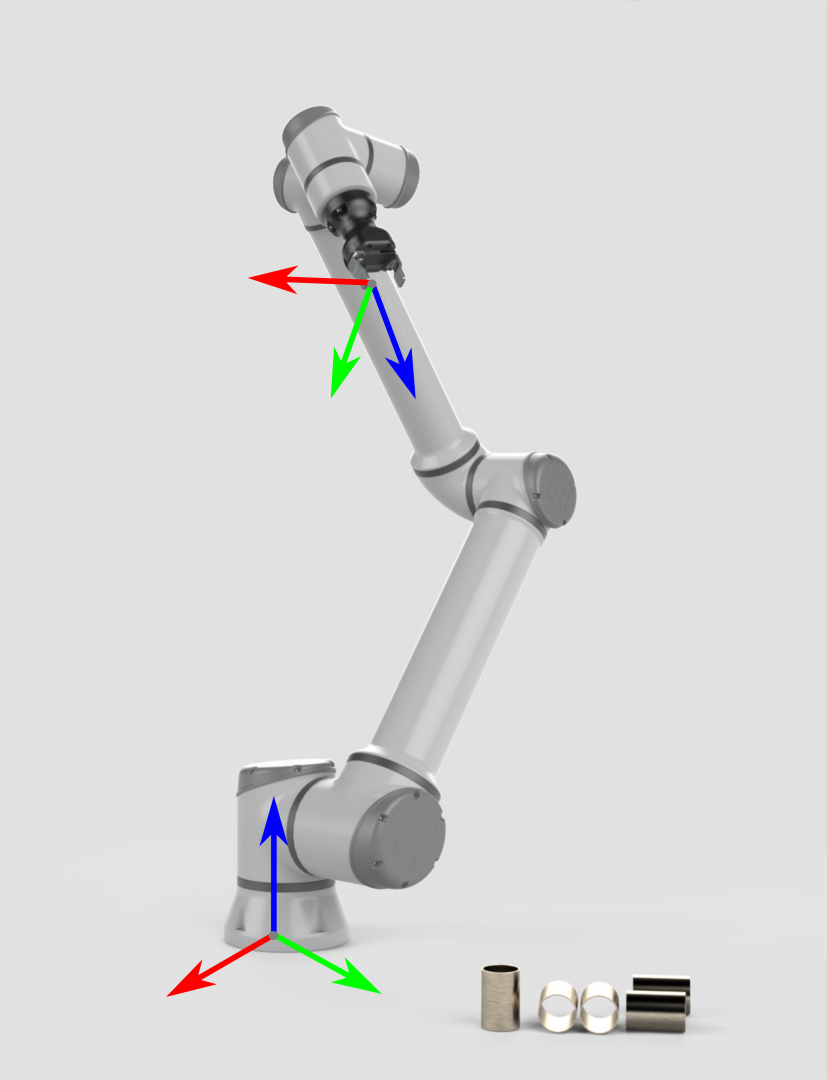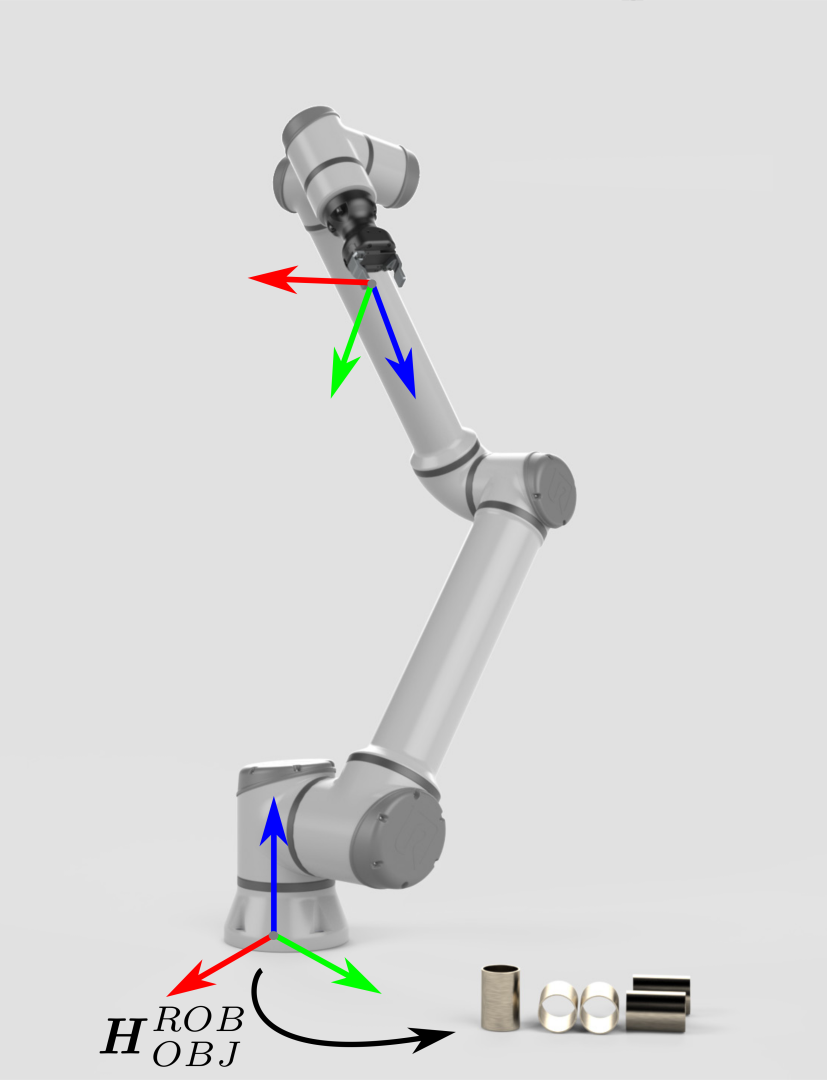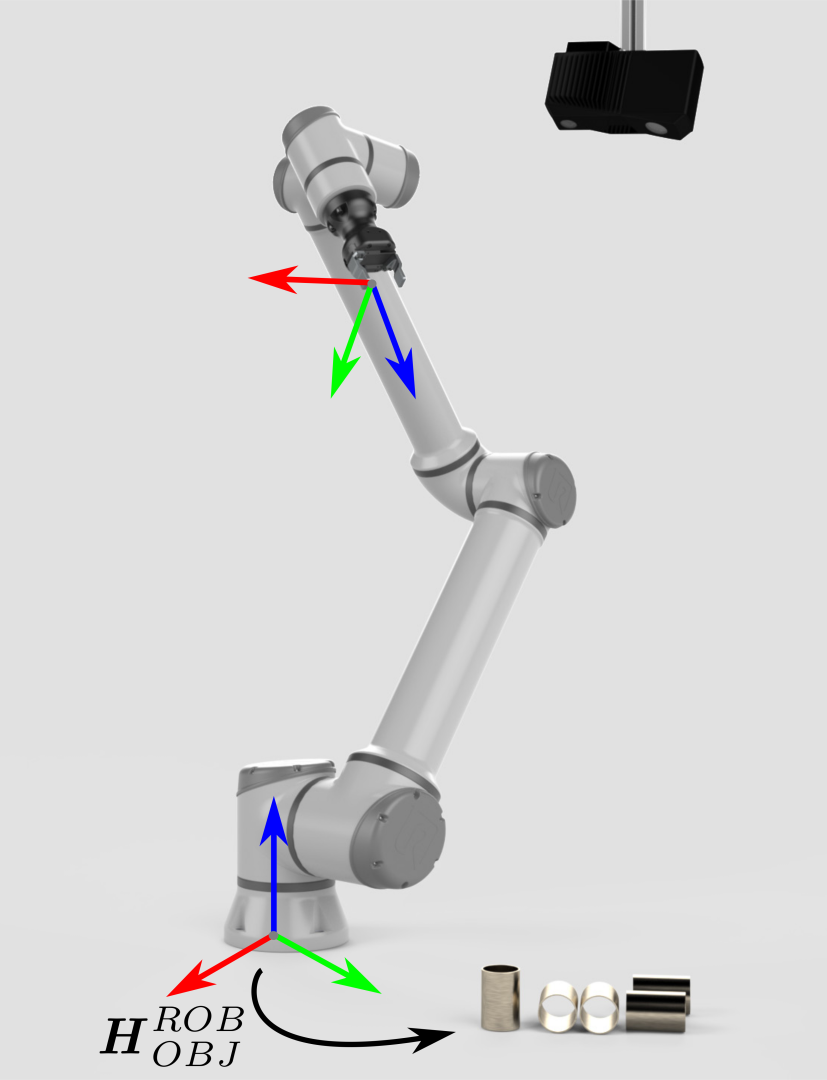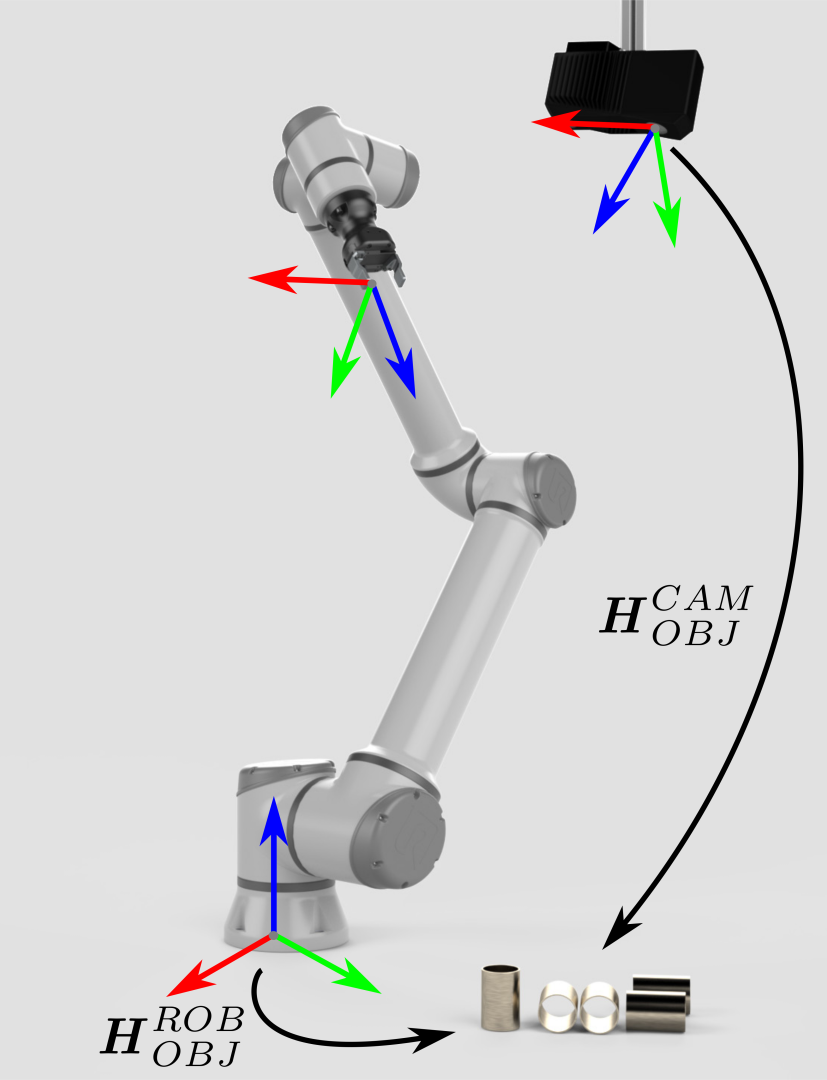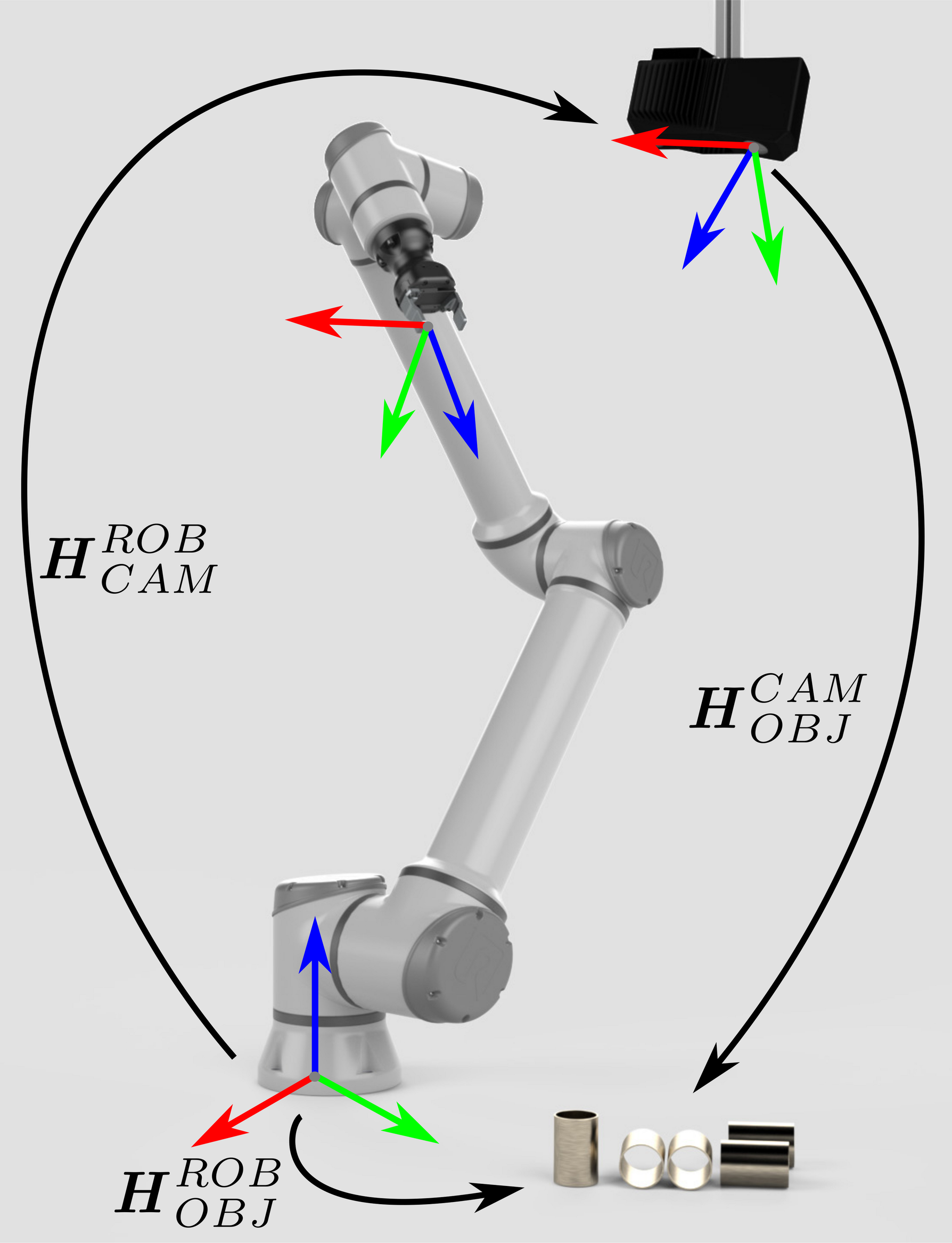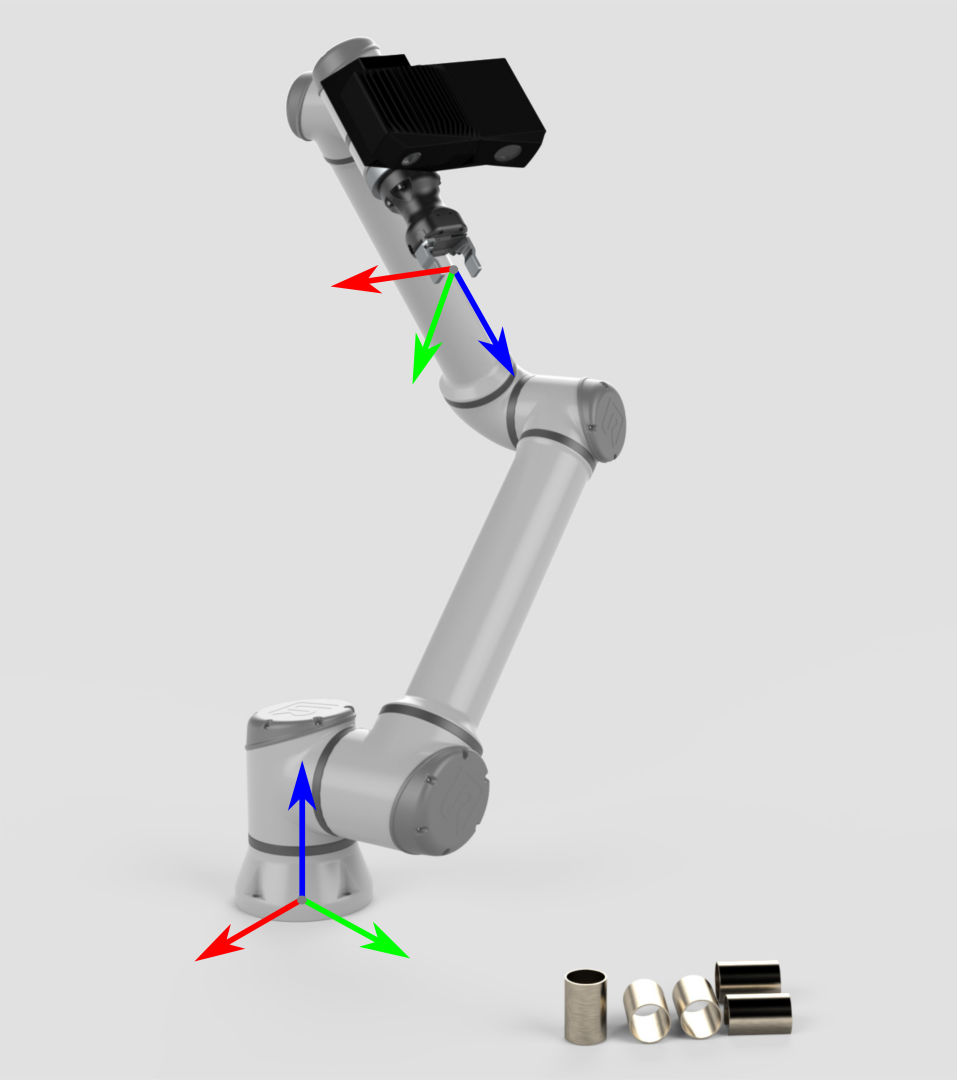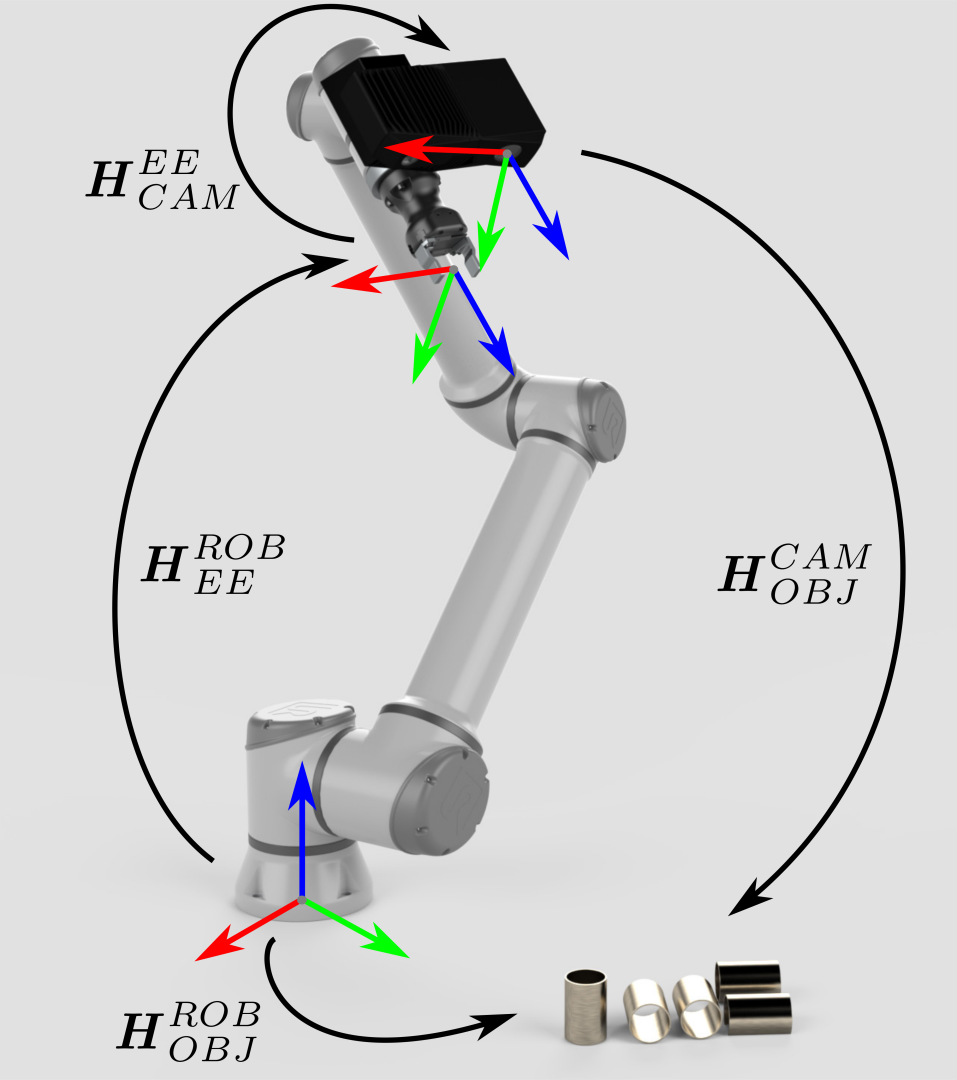Hand-Eye Calibration Problem
This tutorial aims to describe the problem that the hand-eye calibration solves as well as to introduce robot poses and coordinate systems that are required for the hand-eye calibration. The problem is the same for eye-to-hand systems and eye-in-hand systems. Therefore, we first provide a detailed description for the eye-to-hand configuration. Then, we point out the differences for the eye-in-hand configuration. If you are not familiar with (robot) poses and coordinate systems, check out Position, Orientation and Coordinate Transformations.
Eye-to-hand
How can a robot pick an object?
Zivid point clouds are given relative to the Zivid camera’s coordinate system. The origin in this coordinate system is fixed at the middle of the Zivid imager lens (internal 2D camera). A machine vision software can run detection and localization algorithms on this collection of data points. It can determine the pose of the object in Zivid camera’s coordinate system (\(H^{CAM}_{OBJ}\)).
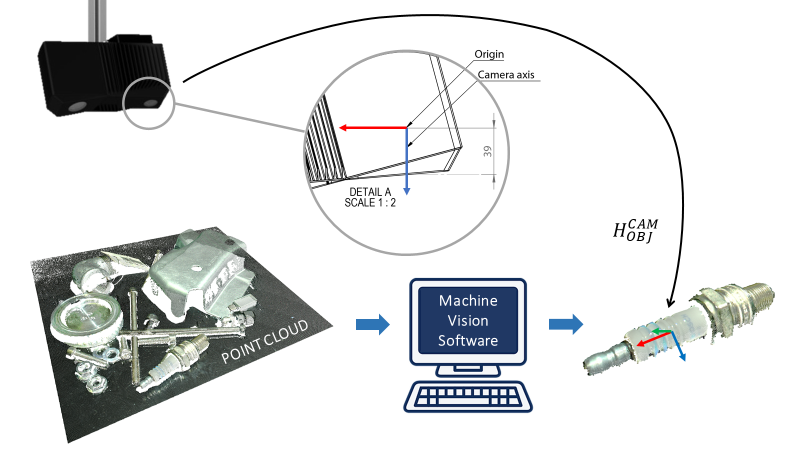
Eye-in-hand
How can a robot pick an object?
Now that we’ve defined the hand-eye calibration problem, let’s see the Hand-Eye Calibration Solution.
